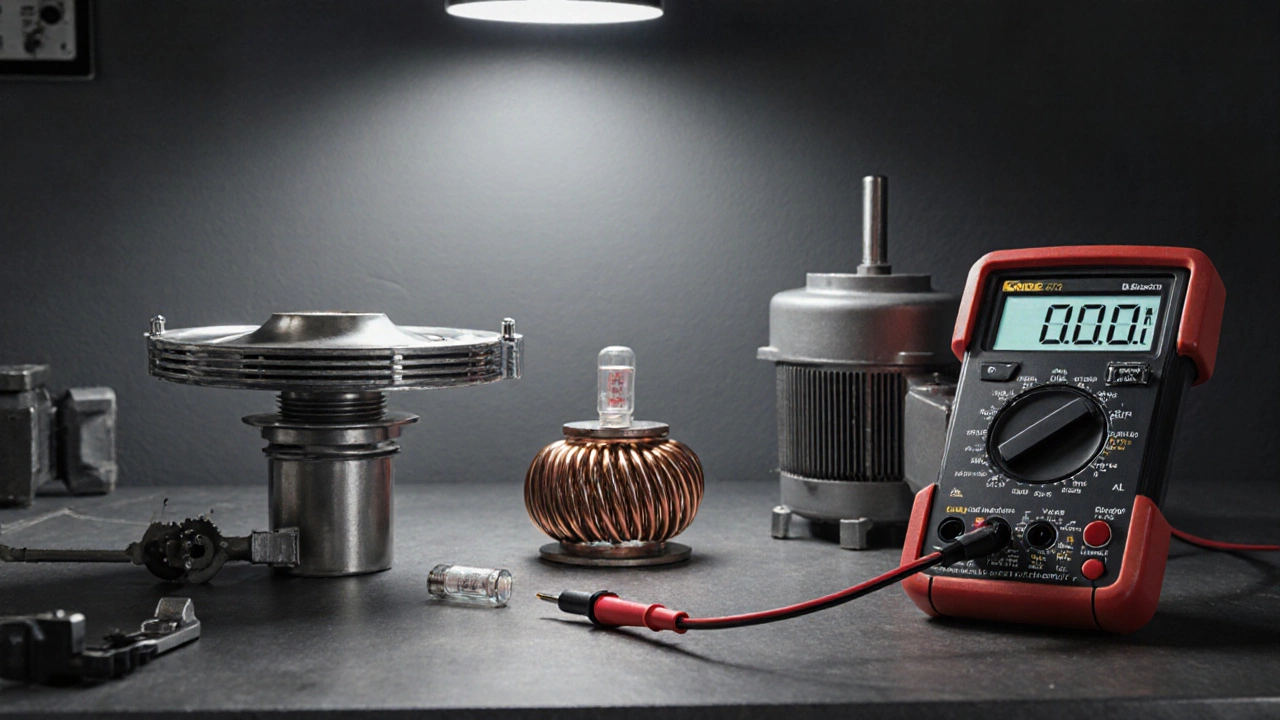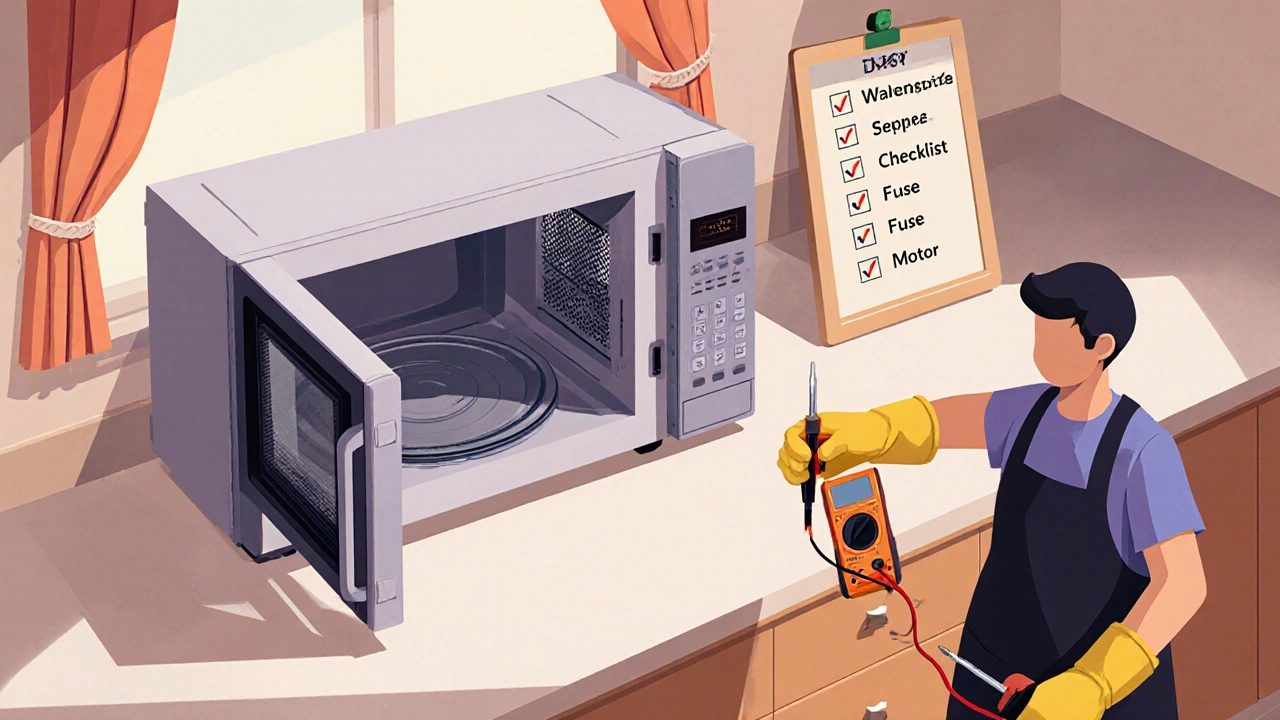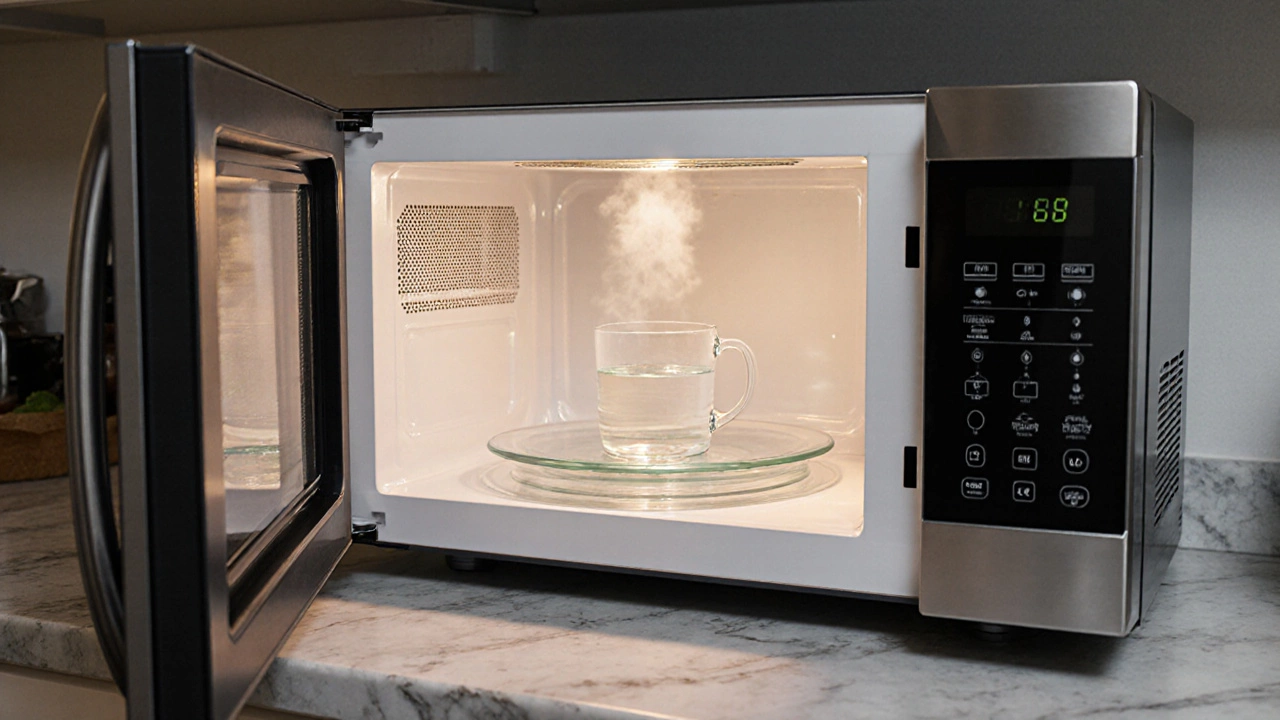When your Microwave oven a kitchen appliance that uses microwave radiation to heat food quickly starts acting up, the first instinct is to wonder if it needs a full replacement. Before you toss it out or call a tech, there are several tell‑tale signs that point to specific parts wearing out. This guide walks you through the most common symptoms, how to test them safely, and when a professional repair is worth the money.
Key Signs Your Microwave Is Failing
- Microwave not heating - the most obvious red flag; the turntable spins but the food stays cold.
- Uneven heating - hot spots next to cold spots, even though you follow the same cooking time.
- Strange noises - buzzing, humming louder than usual, clicking, or grinding sounds.
- Sparking inside the cavity - visible arcs or a metallic smell.
- Door won’t stay closed or the latch feels loose.
- Display shows error codes or flashes repeatedly.
- Excessive smoke or a burnt odor after a short run.
- Power trips the circuit breaker each time you start the microwave.
Safe First‑Step Checks
- Unplug the unit for at least two minutes. This discharges the high‑voltage capacitor and prevents accidental shocks.
- Inspect the interior for food debris, metal pieces, or a damaged turntable.
- Test the door latch: close the door and press the start button. If the microwave fires, the latch is still functional; if it stays silent, the interlock may be faulty.
- Run a simple water test. Place a cup of water inside, set 30 seconds, and observe if the water heats. No heat means a problem somewhere in the high‑voltage circuit.
Diagnosing Common Problems
Once the basic safety checks are clear, you can start pinpointing the culprit. Below are the main components that fail most often, each defined with microdata for quick reference.
Magnetron the heart of the microwave that generates the microwaves used to cook food - if the magnetron is dead, the oven won’t heat at all. Signs include a humming sound without any temperature rise.
Turntable motor a small motor that rotates the plate to ensure even cooking - a grinding or clicking noise often points to a worn motor or stripped gear.
Door interlock switch safety switches that prevent the microwave from operating when the door is open - a loose or broken latch will stop the unit from starting.
High voltage transformer boosts the line voltage to the level needed by the magnetron - a buzzing transformer with no heating often means it’s failing.
Control board the electronic brain that interprets button presses and runs the cooking cycle - error codes, blank displays, or random shutdowns usually trace back here.
Fuse a safety component that blows when too much current flows, protecting the microwave’s circuitry - if the microwave trips the breaker instantly, a blown fuse or shorted component is likely.

What Each Symptom Usually Means
| Symptom | Probable Cause |
|---|---|
| Microwave not heating | Magnetron, high voltage transformer, fuse, or control board |
| Uneven heating | Turntable motor, faulty turntable, or magnetron hotspot |
| Buzzing louder than normal | High voltage transformer or magnetron failing |
| Grinding or clicking noise | Turntable motor or gear wear |
| Sparking inside cavity | Damaged waveguide cover, metal objects, or faulty door latch |
| Door won’t close / won’t start | Door interlock switch or latch mechanism |
| Error code displayed | Control board fault or sensor failure |
| Smoke or burnt smell | Food spill onto magnetron, damaged waveguide, or overheating fuse |
| Breaker trips on start | Blown fuse, shorted transformer, or internal short |
DIY Repair Checklist
- Gather tools: multimeter, screwdriver set, nut driver, and insulated gloves.
- Always disconnect power before opening the cabinet.
- Check the fuse with a multimeter; replace if it shows infinite resistance.
- Test the door interlock with continuity; replace the switch if no reading.
- Measure the transformer’s secondary voltage (about 2,000 V). If it’s far off, the transformer needs replacement.
- Inspect the magnetron for visible burn marks or a cracked window. Replace only if you’re comfortable handling high‑voltage parts.
- Verify the turntable motor spins freely when removed; lubricate or replace if it’s stiff.
- Re‑assemble, plug back in, and run the water test again.
When to Call a Professional
If any of the following apply, it’s safer and more cost‑effective to hire a qualified technician:
- You need to replace the magnetron, transformer, or control board. These parts involve dangerously high voltages even after unplugging.
- Multiple components appear damaged (e.g., burnt waveguide plus blown fuse).
- Your microwave is still under warranty; opening it could void coverage.
- You lack the proper tools or confidence to work safely with high‑voltage circuits.
Professional repair rates in New Zealand typically range from NZ$80 to NZ$150 for diagnosis, plus the cost of parts.

Quick Reference - 5‑Step Troubleshooting Flow
- Power check - does the display light up? If not, inspect the power cord and outlet.
- Door latch - does the microwave start when the door is firmly closed? If not, replace the door interlock.
- Water test - does a cup of water heat? No heat points to magnetron, transformer, or fuse.
- Listen for noises - buzzing or grinding narrows it down to transformer or motor.
- Error codes - look up the displayed code in the user manual; most point to the control board.
Final Thoughts
Understanding the symptoms and the parts behind them turns a mysterious failure into a manageable repair project. By following the safety steps, using a multimeter to verify components, and knowing when to call a pro, you’ll extend the life of your microwave oven and avoid unnecessary replacements.
Frequently Asked Questions
Why does my microwave make a humming noise but not heat?
A humming sound usually means the high‑voltage transformer is working, but the magnetron may have failed or the fuse is blown. Test the fuse first; if it’s good, the magnetron is the likely culprit.
Can I replace the turntable motor myself?
Yes, the motor is low‑voltage and easy to access. Unplug the microwave, remove the bottom panel, disconnect the motor wires, and swap it with a matching replacement.
What does an error code ‘F4’ mean on most microwaves?
‘F4’ is commonly a door latch or interlock fault. Check the door switches with a multimeter; replace any that don’t show continuity.
Is it safe to use a microwave that sparks inside?
No. Sparking indicates a problem with the waveguide cover, metal objects, or a damaged door latch. Continue using it can damage the magnetron or start a fire.
How often should I clean the interior to prevent failures?
Wipe the interior after each use and deep‑clean every month. Remove food splatters, especially near the waveguide cover, to keep the magnetron and fan from overheating.

